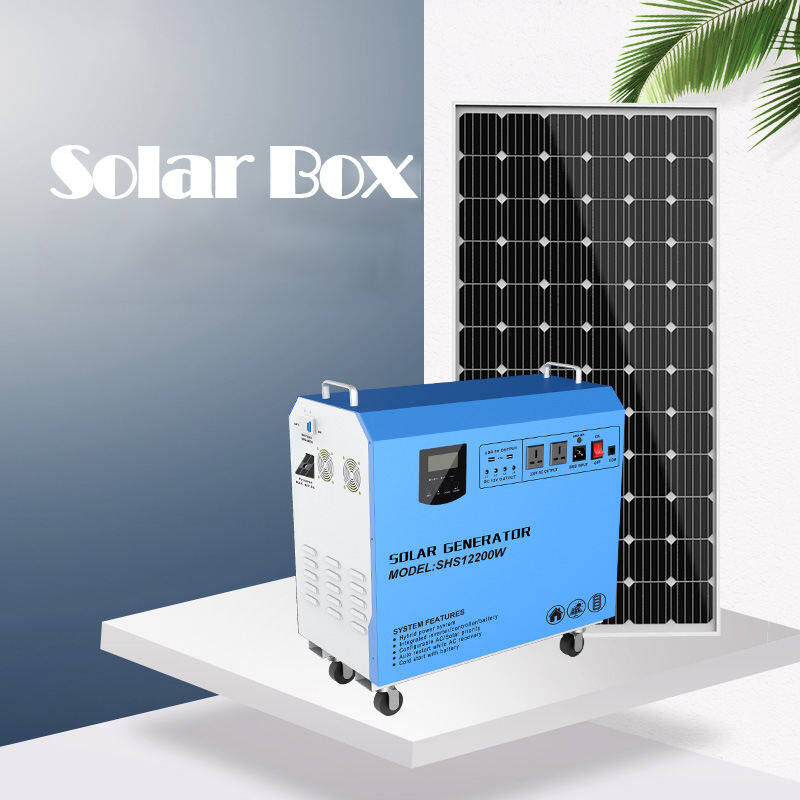Email format error
Email cannot be empty
Email already exists
6-20 characters(letters plus numbers only)
The password is inconsistent
Email format error
Email cannot be empty
Email does not exist
6-20 characters(letters plus numbers only)
The password is inconsistent


VAWT for Home Energy: A Sustainable Solution
Introduction to VAWT:
Vertical Axis Wind Turbines (VAWT) present a forward-looking approach to harnessing wind energy. Diverging from conventional horizontal axis wind turbines (HAWT), VAWTs boast a vertical rotor axis, unlocking distinctive advantages across various applications. Diverse design iterations, including Darrieus, Savonius, and helical models, cater to specific needs and geographical considerations.
Differences from HAWT:
1. Design Orientation: VAWTs stand apart with their vertical axis, in stark contrast to the horizontal axis of HAWTs, influencing their overall structural dynamics.
2. Placement: The vertical axis of VAWTs allows for a more condensed placement, making them apt for densely populated areas and residential settings.
3. Starting Wind Speed: Notably, VAWTs exhibit a lower starting wind speed requirement, rendering them adaptable to regions characterized by lower wind speeds.
Advantages and Disadvantages of VAWT, Especially in Residential Use:
Advantages:
1. Space Efficiency: The vertical axis of VAWTs facilitates a more compact design, particularly suited for urban and residential environments where space is at a premium.
2. Lower Noise Levels: The inherent design of VAWTs often results in quieter operation, effectively addressing concerns related to noise pollution in residential areas.
3. Omnidirectional Wind Capture: A noteworthy feature of VAWTs is their capacity to capture wind from any direction, eliminating the need for intricate mechanisms to align with the wind.
Disadvantages:
1. Lower Efficiency: VAWTs, as a trade-off for their spatial efficiency, tend to exhibit lower overall efficiency compared to larger HAWTs, imposing limitations on their energy output.
2. Complex Design: Some VAWT designs can be intricate, demanding meticulous engineering and maintenance for optimal performance.
Benefits of VAWT for Homeowners:
1. Reduced Carbon Footprint: By generating electricity from wind power, VAWTs contribute significantly to a cleaner environment, effectively reducing the carbon footprint associated with conventional energy sources.
2. Energy Independence: VAWTs empower homeowners to achieve a degree of energy independence, diminishing their reliance on centralized power grids.
Choosing the Right VAWT for Home Use:
1. Size: A judicious consideration of available space on the property is paramount when selecting a VAWT size, striking a balance between power output and spatial constraints.
2. Efficiency: Rigorous evaluation of the turbine's efficiency under diverse wind conditions is crucial to ensuring optimal performance over time.
3. Installation Requirements: A meticulous assessment of installation requirements, including permits and adherence to local regulations, streamlines the overall installation process.

Installation and Maintenance:
1. Installation:
Identify an optimal location with consistent wind patterns.
Secure the requisite permits and adhere diligently to local regulations.
Follow the manufacturer's guidelines for assembly and connection to the home's electrical system.
2. Maintenance:
Conduct regular inspections for signs of wear and tear.
Adhere to recommended lubrication schedules for moving parts.
Maintain cleanliness in the turbine's vicinity to maximize efficiency.
Cost Analysis and Return on Investment (ROI):
1. Initial Costs:
Account comprehensively for purchase and installation expenses.
factor in costs associated with permits and meticulous site preparation.
2. ROI Calculation:
Rigorously assess potential energy savings over an extended timeframe.
Explore available government incentives and rebates to offset initial costs.
Environmental Impact and Sustainability:
1. Environmental Impact:
Scrutinize the diminished carbon footprint of VAWTs in comparison to conventional energy sources.
2. Sustainability:
Emphasize the pivotal role of VAWTs in fostering a sustainable and eco-friendly energy landscape.
Regulations and Permits:
Navigate through the intricate landscape of local regulations, mandatory permits, and zoning considerations, furnishing homeowners with a comprehensive understanding of the legal aspects underpinning VAWT installations.
Future Developments in VAWT Technology:
Delve into the evolving realm of emerging technologies and innovations within the VAWT sector, shedding light on potential advancements poised to redefine the efficiency, affordability, and overall viability of residential VAWT systems in the future.

